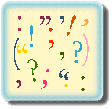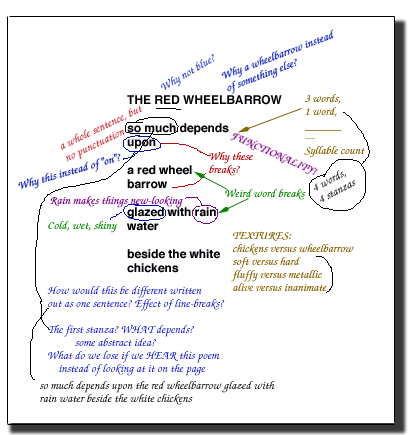Absinthe Liquori
Composition Patterns: Evaluative Essays (Reviews)

Probably one of the first essays you ever had to write (after you wrote about what you did on your summer vacation) was a book review of some kind. You probably gave a brief run-down of the book's major characters, a summary of the plot (if there was one) or told what the book was about, and then said how wonderful the book was (being careful not to reveal too much about the ending). The evaluative essay remains a valuable tool in your arsenal of composition patterns. Hopefully, your ability to say what you like about the object at hand -- whether it's a book or a painting or a jazz album or a rock concert or a dinner at a fancy restaurant or the design of a new car -- has become more subtle and convincing over the years since your first book review.
Writing about literature demands special skills, and we recommend an online document called Suggestions about Writing Papers for Introduction to Literature. In writing about poetry or a short story or play or novel, it is very important to keep in touch with the language of the art, showing your reader over and over again where (exactly) in the poem or story you get your ideas, and to do that you have to use quotations -- sometimes a lot of quotations. Pay special attention to the hints in that document about using quotations.
One device you might want to use in writing your evaluative essay is the device of comparison and contrast. The art work you are looking at doesn't exist in a vacuum. You can beef up your essay and add to your readers' understanding at the same time by comparing, for instance, this rock album to an earlier album by the same group, showing how the group has matured (or deteriorated) or by comparing this album to another group's album, which does the same thing, but better. Be fair in your comparisons.
Whether you are writing about literature or a rock concert, though, there are several points about the evaluative essay you want to keep in mind.
First, avoid using language that is simplistically judgmental. Don't say that something is great or beautiful or exciting or interesting. Your readers are apt to become defensive: "We'll be the judge of that," they'll say. Your job as the writer of this essay is to show how the work under consideration is beautiful or exciting. If you do that well, your readers will be convinced of the work's beauty without your saying that it's beautiful. An occasional, off-handed "beautiful" or "exciting" is all right; just don't expect your readers to be convinced unless you make them feel that beauty or excitement.
Second, as the "Suggestions" (hyperlinked above) notes, don't re-tell the story. Only a sentence or two is enough to recap the story of an entire novel. If you spend your essay telling readers what happened in The Bluest Eye, they're going to wonder why they aren't reading Toni Morrison's novel instead of your essay; after all, she probably did a better job telling her story than you could ever do. Your job is to provide some insight into how Morrison did what she did. Then, in reading your essay, readers will say, "Wow! That's neat! I better go read that novel."
There will be occasions when you are forced to use the specialized vocabulary that people who really like this kind of art are used to using. Reading the CD booklets of jazz albums is sometimes like reading a foreign language. That's to be expected. If it's written well, your reader will go along with you. You can't be expected to review a rock concert with the same language that you'd use to review the performance of a string quartet. The environment and special effects of a rock performance are a big part of your enjoyment of it; on the other hand, you would remark on the environment of a string quartet performance only if it were particulary inappropriate for careful listening. Critics who write about art sometimes have their own vocabulary for doing so, and you need to be at least somewhat familiar with that vocabulary before writing seriously about art.
A Sample Paper
It might be helpful to have on hand a sample of an essay written about a poem. Absinthe Liquori, a former community college student, has given us permission to use her essay written on William Carlos Williams's poem "The Red Wheelbarrow." This poem is one of the most often anthologized pieces in American literature. In spite of its brevity, there is much to be discovered within its eight short lines, as we will see. If you would like an easily printable version of this essay, click HERE.First, though, let's take a look at the page of marginal notes that Absinthe scribbled on the poem. She typed out the poem and carried it around with her for a couple of days, writing notes with different colored pens as she sat on the bus, in the dentist's office, in the employment office of an insurance company where she was looking for part-time work to pay for college costs, and in her uncle's living room when she babysat for his two obnoxious children. Such is the life of the community college student!
Keep in mind that this is not a research paper on Williams or on his poem. The instructor apparently did not ask for Absinthe to look into Williams's life or to find out what other writers and professional critics thought of this poem. What we have here, then, is entirely Absinthe's reaction to the poem itself. For help with writing a research paper on a topic such as this, consult the Guide to Writing Research Papers. If you would like a somewhat larger version of this image, click HERE, please.

As you read Ms. Liquori's paper, you will discover we have embedded clickable icons
within the text that, when clicked on, will open frames pointing out various features of the paper. We suggest you read the paper through before clicking on these icons.
Intro to Literature W554
Professor Villa
April 15, 1997
William Carlos Williams's "The Red Wheelbarrow"
![]() William Carlos Williams's poem "The Red Wheelbarrow"
William Carlos Williams's poem "The Red Wheelbarrow"
![]() In fact, an interesting experiment would be to give a group of people the words that Williams uses and ask them to arrange the words into the structure of a poem. How many people would do as Williams does
In fact, an interesting experiment would be to give a group of people the words that Williams uses and ask them to arrange the words into the structure of a poem. How many people would do as Williams does
so much depends upon a red wheelbarrow glazed with rain water beside the white chickensis poured into a form of mathematical precision:
Instead of flying through the sentence, as one would do if it were simply written in a linear way across the page,so much depends
upon
a red wheel
barrow
glazed with rain
water
beside the white
chickens
![]() And there is a difference. The first stanza is abstract, calling upon the reader to agree to the notion that something depends on something. But the word is not "on";
And there is a difference. The first stanza is abstract, calling upon the reader to agree to the notion that something depends on something. But the word is not "on";
![]() Something else alters our perception of the red wheelbarrow, and that is the juxtaposition of the cold, inanimate barnyard tool with the animate, white, alive, and moving chickens of the last stanza. The red of the wheelbarrow has been made more red, deeper in hue, by the rainwater, and it is also more red because it is sitting next to the white chickens. The chickens, on the other hand, are more white because they are next to the newly refreshed redness of the wheelbarrow. Colors in "The Red Wheelbarrow," then, are not just colors; they attain depth, texture, and life.
Something else alters our perception of the red wheelbarrow, and that is the juxtaposition of the cold, inanimate barnyard tool with the animate, white, alive, and moving chickens of the last stanza. The red of the wheelbarrow has been made more red, deeper in hue, by the rainwater, and it is also more red because it is sitting next to the white chickens. The chickens, on the other hand, are more white because they are next to the newly refreshed redness of the wheelbarrow. Colors in "The Red Wheelbarrow," then, are not just colors; they attain depth, texture, and life.
![]() A question remains. What on earth depends "upon / a red wheel / barrow / glazed with rain / water / beside the white / chickens"?
A question remains. What on earth depends "upon / a red wheel / barrow / glazed with rain / water / beside the white / chickens"?
![]() The formality of the structure of "The Red Wheelbarrow" forces us to consider the poem as composition, as if it were a painting or a snapshot. The balanced, brief stanzas and lines cause us to pause and consider, as we
The formality of the structure of "The Red Wheelbarrow" forces us to consider the poem as composition, as if it were a painting or a snapshot. The balanced, brief stanzas and lines cause us to pause and consider, as we
Points to Ponder:
- Are there other points about the poem that the author should have brought up in her treatment of "The Red Wheelbarrow"?
- What structural elements holds this essay together? Try printing the essay and connecting structural elements with circles and lines.
- How would you describe the Tone of this piece? Is it appropriate for the subject? How would you describe the audience of the essay?
- Can you point to a Thesis Statement for this essay?
Other Examples
We also have online a fine essay on Charlotte Perkins Gilman's short story "The Yellow Wallpaper." Click on the story's title to read the story first. The essay is called "'The Yellow Wall-Paper': A Twist on Conventional Symbols." It was written by Liselle Sant, a student in Smith College's Connections Program (1995) and is used in conjunction with the Connections web-site with Ms. Sant's permission. For other examples of evaluative essays, we provide a hyperlink here to Capital Communit College's Archive of Sample Students' Essays. Click on English in the left-hand frame and enjoy! (There are also some good book reviews listed under History.) The beginning (actually, three full paragraphs) of another evaluative essay (on a painting by Bruegel) is available in the Guide, in the section called "Writing With a Sense of Purpose."Here, also, are some hyperlinks to online journals where you can read evaluative essays by professional writers. Remember that these are professionals and they are probably able to make connections to social concerns and make artistic representations and generalizations that you're not ready to make (or shouldn't make). That's all right; they're professionals and they're getting paid for their professional opinions, even. You'll enjoy that status, too, someday, if you're willing to work for it.
- The Boston Book Review
- The Atlantic Monthly
- The Black World Today: Black Aesthetics
(Click on either music or book reviews)- The New York Review of Books